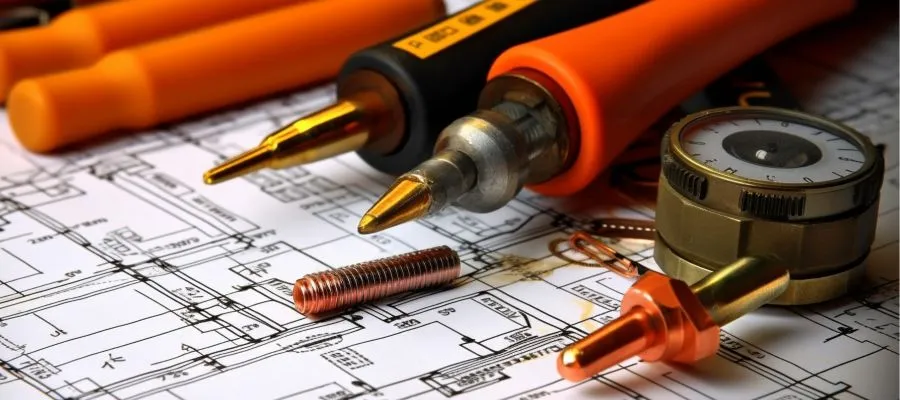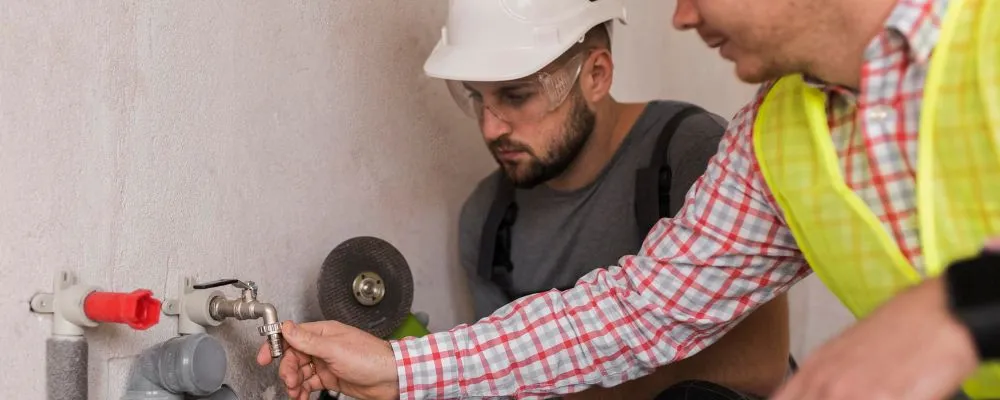Following building codes when installing plumbing is not only the legal requirement, but also a very important step to make sure that your system is safe, reliable, and lasts a long time. For any construction work, it’s important to ensure the plumbing installation follows the building code. It is very important for homes, contractors, and plumbers to follow these code requirements exactly because they were carefully constructed to protect public health, safety, and welfare.
In this blog, Brick & Bolt will explain why following the building code is important for plumbing installation, as well as the code’s requirements, construction standards, government rules, and the best ways to ensure compliance.
- 1 Importance of Building Code Compliance in Plumbing Installation:
- 2 What are Plumbing Codes and Regulations?
- 3 Regulatory Guidelines and Construction Standards
- 4 Code Requirements For Plumbing Installations
- 5 How to Ensure Code Compliance Throughout the Project?
- 6 Regulatory Guidelines and the Compliance Process:
Importance of Building Code Compliance in Plumbing Installation:
Building codes are rules the government makes to protect people who live or work in buildings. Following plumbing codes is important to keep people safe, ensure plumbing systems work correctly, and avoid possible legal problems or expensive repairs. Not following the rules can lead to fines, job delays, or even legal problems.
What are Plumbing Codes and Regulations?

Plumbing codes specify how plumbing systems should be designed, installed, and kept up. These regulations come from safety standards, environmental concerns, and business standards. Building codes include a lot of different rules, and plumbing codes are a part of those rules that are only for these systems.
Here’s what you need to know about plumbing codes:
- It’s important to find out what plumbing code applies to the area where your job is going to be done. You can do this by getting in touch with your local building department.
- Most building codes are easy to find online or can be bought at offices that police the codes.
- Plumbing rules are meant to be clear, but some parts can be hard to understand. For complex projects, it’s best to talk to a licensed plumber or building inspector first.
Regulatory Guidelines and Construction Standards
Although building codes outline the basics of plumbing installation requirements, it’s important to know and follow the many other rules and guidelines that go along with them. These rules and guidelines give specific directions, requirements, and the best ways to do different types of plumbing work.
These are some of the most popular guidelines and standards:
International Plumbing Code(IPC):
The International Plumbing Code (IPC) was created by the International Code Council (ICC). It is a model code that is widely used to guide the planning, installation, and upkeep of plumbing systems.
Uniform Plumbing Code (UPC):
The UPC is another important model code that sets standards for plumbing systems. It was created by the International Association of Plumbing and Mechanical Officials (IAPMO).
The National Standard Plumbing Code or NSPC :
The Plumbing-Heating-Cooling Contractors Association (PHCC) puts out the NSPC, which has rules for installing, inspecting, and maintaining plumbing systems.
Manufacturer’s Installation Instructions:
Many companies that make plumbing products come with detailed installation directions that must be followed to make sure the product works right and keep the warranty valid.
Local Officials:
Some places may have extra local changes or amendments to the adopted plumbing codes, so it’s important to check with the local officials to find out what you need to do.
Code Requirements For Plumbing Installations
Plumbing codes cover many different parts of plumbing systems, such as
Fixtures and Appliances:
Building codes determine the number and type of fittings (sinks, toilets, etc.) needed based on the number of people living in and using the building. They also list the exact installation needs for each fixture, including clearances and water supply connections.
Piping Materials and Sizes:
Pipes and fittings can only be made of certain materials, which are listed in codes based on things like pressure grade and purpose. Also, pipe size rules make sure that water flows properly through the system.
Venting:
Ventilation systems are very important for keeping sewer gases out of the house. Codes say how air pipes should be laid out and how big they should be for best performance.
Drainage Systems:
Building codes make sure that trash is thrown away properly by laying out the rules for drain lines, traps, and sanitary sewer connections.
Water Supply Systems:
Codes cover how to place water meters, pressure regulators, and pipes that carry water to make sure that it is delivered safely and reliably.
Backflow Prevention:
Devices that stop backflow are necessary to keep dirty water from getting into the drinkable water supply. In certain situations, building rules require these devices to be put in place.
How to Ensure Code Compliance Throughout the Project?
Following construction regulations and best practices is as important as following the code when installing plumbing. Here are some best practices:
Hiring Licensed Experts:
Make sure that the people installing the plumbing are licensed, have a lot of experience, and know what the building codes and industry norms are.
Planning and Design:
Include code standards from the beginning of the design process. Talking to a plumbing tech can help you make sure you’re following complicated code rules.
Permits:
Before you start any plumbing work, make sure you have the right plumbing permits from your local building department.
Regular Inspections:
During the building process, do regular checks to find and fix any code violations or installation mistakes right away.
Use of Quality Materials:
When you do plumbing work, make sure you use good materials and equipment that meet industry standards and have a history of working well and lasting a long time.
Proper Documentation:
Keep thorough records of plumbing installations, such as plans, permits, inspections, and lists of materials used, to show that they follow the rules set by the building code.
Regulatory Guidelines and the Compliance Process:
Regulatory agencies make sure that plumbing codes are followed by issuing permits, inspecting work, and taking other steps as needed. Usually, the following steps make up the compliance process:
- Application for a Permit: Get the plumbing installation permits you need from the local building department or regulatory body.
- Plan Review: Send plumbing plans to be looked over to make sure they meet code standards before starting the installation.
- Inspection: Plan inspections at different steps of the building process to make sure you’re following the rules. These could include rough-in, final, and occupancy inspections.
- Compliance Corrections: Take care of any code violations found during checks right away, and make sure the fixes meet regulatory requirements.
- Certificate of Occupancy: When the building project is finished, get a certificate of occupancy that says you followed all the rules and codes for building.
In conclusion, by making sure that plumbing installations follow building codes, you not only follow the law, but you also make your plumbing system safer, more reliable, and last longer. Investing in installations that meet building codes may take more time and money at first, but it pays off in the long run by giving you peace of mind and the knowledge that your plumbing system meets the greatest standards of construction.
If you want to know more about building codes and standards, click the link below.
Building Codes and Standards: Staying Up-to-Date with Regulatory Requirements

